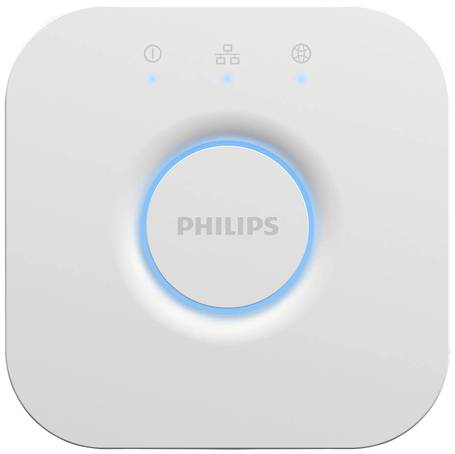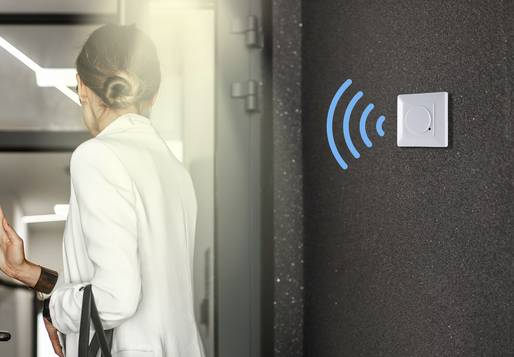Smart home for beginners » Basics of home automation
Published: 24.08.2021 | Reading time: 11 minutes
This text is machine translated.
Intelligent switching, heating control and hazard and burglary protection are smart home applications that make your everyday life easier, more convenient and safer. The technology is also fun.
Modern home automation doesn't stop at lights, thermostats and alarm systems. The water sprinkler automatically takes care of watering the garden, open the front door for your neighbor to water the flowers while you're on vacation and your favorite music greets you when you come home.
Intelligently networked components work together perfectly and expand the possibilities. You also save energy and improve your ecological footprint. Customized home automation can be realized with affordable products.
Thanks to the large number of providers and components, you will find a suitable solution for every desired configuration and expansion level. Start as small or as large as you like with building automation, for example with a smart lighting system, networked hazard alarms or start with a thermostat starter kit for houses and apartments. As your requirements grow, you can expand the smart home system step by step. The only prerequisite for this is that the products are selected according to your needs right from the start.
Intelligent living has long since outgrown its infancy; today the house thinks for itself and takes over many small and large tasks of daily life. Installation is now neither messy nor particularly difficult.
The connection can be made by cable or wirelessly. You can take the necessary components into account when planning new buildings or retrofitting existing properties.
To begin with, first consider what structural options are available:
New construction and building renovation
New builds or renovations are the most flexible. Because as long as the electrics in the house have not yet been laid, everything is open. Structured cabling via a bus system is then an option. It connects the switching actuators and sensors invisibly via cables in the walls or ceilings. The control modules are located centrally in one place, usually on the top-hat rail in the fuse box or distribution board. The cables for device control typically run as a second network parallel to the power supply in the house. Compared to a conventional electrical installation, this results in more cabling. The best-known bus systems include KNX and HomeMatic IP.
The main advantages of a hard-wired bus system are the high reliability of data transmission and its resistance to external influences. The range is only limited by the cable. This means that extensive buildings can be covered and outbuildings securely connected. The work required for cable installation and programming results in higher initial costs.
Existing building
Retrofit systems offer you the opportunity to equip existing houses and apartments with smart technology without interfering with the building fabric.
They are cheaper for building owners than bus systems.
The sensors and actuators communicate with each other wirelessly. This means you don't need to cut open walls or make changes to the electrical distribution.
Smart home wireless systems also make it possible for tenants to realize their dream of smart living. If you move house, you can dismantle the system and take it with you without much effort or trace.
Pay attention to the range of functions when choosing a system. If you want to enjoy your new smart home system in the long term, the features should match your requirements and needs. Consider whether a simple automation system that allows you to control a few individual devices via (smartphone) remote control is enough. Such products can be set up in no time at all and are immediately ready for use.
Experimental technology fans value a wide range of control, programming and linking options. You benefit from a system that is as complex as possible with a wide range of functions. The extensive options require training and a little tinkering until everything runs as desired.
Regardless of which system you choose: The easiest way to get started is with a starter kit. It is easy to set up and contains everything you need to get started. This usually includes a gateway, a bridge or a hub from the manufacturer as a base station and central element. The smart home devices communicate with each other via the gateway. It implements the control commands, monitors time sequences and executes if-then routines.
Starter kits are available for many application scenarios and tasks, for example to conveniently switch the light, raise and lower shutters and blinds depending on the situation or to deter burglars.
In addition to the control center as the basis, a starter package includes further modules depending on the package variant. Wireless sockets, motion and smoke detectors or networked lights are common.
The components are coordinated with each other and make it easier to get started with a networked home. Later, you can simply expand your starter kit with additional modules.
Combination of different starter sets
The integration of various starter kits makes your smart home even more versatile: combine the Homematic IP starter set “Room Climate” or “Alarm” with your favorite starter set from Philips Hue for lighting control and smart Gardena devices for irrigation control.
You already have everything you need to get started: a computer, smartphone or tablet. As the person administering the system, you use these to determine what should happen and when. You set up everything, adjust the default settings and operate the devices via an app or in the browser.
Whether it's smart underfloor heating, a hazard warning system or a lighting system: after unpacking, the smart home system must first be set up. This involves configuring the gateway and learning the sensors and actuators. How you proceed and how complex the commissioning process is depends on the system in question. Starter kits are generally very easy to use and guide you through the configuration step by step.
Example Philips Hue
The starter sets for the classic automatic LED lighting system consist of the Hue Bridge and various Hue light bulbs. And this is how it works:
1. install the LED lights supplied in the set in your lamps or attach the Hue light strips. Now switch on the lights.
2. connect the Hue Bridge to the power supply and to the router via a network cable
3. install the free Hue app for Android and iOS on your smartphone or tablet. Press the button on the Hue Bridge to connect to the app.
4. start the automatic detection in the Hue app. After a short time, all Hue lights will be listed.
5. now decide in the app how the lighting solution should behave. Dim the lights, adjust the light colors and try out the options for combining lights into groups, setting up timers and selecting light scenes.
What do I need to bear in mind during installation? Installing Smart Home devices on a wireless basis generally involves very little effort.
Devices that you simply plug into a socket and all battery-operated components such as motion detectors, wireless buttons, temperature sensors or heating controllers can be easily set up yourself without any prior knowledge or risk.
The situation is different if work needs to be carried out on the 230 V power supply or the sub-distribution board.
Always leave such work to qualified electricians. Often the contract with the utility company already requires a specialist company to carry out work on the electrical installation.
Many smart home products work with different standards and therefore do not work together.
As a beginner, avoid compatibility stress by only combining products from the same manufacturer and from the same series.
If you are unsure, take a look at the compatibility list on the manufacturer's website to check whether the desired product is compatible with your smart home system.
Tech-savvy users who enjoy tinkering benefit from a wide range of options for networking different home automation systems. This turns an isolated solution into a complete solution with numerous new functions:
Cloud automation
Cloud solutions IFTTT connect networked IoT products across manufacturer boundaries. Instead of launching a separate app for each device, register the components once in the cloud. The devices then communicate with each other online and send notifications or trigger actions.
There are also general interfaces for retrieving live weather data or sending messages by email, SMS or Twitter. For example, a Twitter message can switch on the air conditioning or activate the lawn sprinkler in the garden in the event of acute heat.
Direct interfaces
Open interfaces and APIs in the manufacturer solutions allow experienced users to program their own solutions for cross-provider home control.
Local automation
Even with solutions for local installation on a Raspberry Pi, for example, the devices of one manufacturer no longer remain separate. Free platforms such as Home Assistant, ioBroker Smarthome and OpenHAB bundle various automation standards into a uniform system. You can also create complex rules with logical links via the user interface.
Operation is an important point when selecting automation solutions:
Most smart home systems have intelligent and less intelligent components. A simple adapter plug, for example, only reacts to a radio signal. For more complex connections and dependencies, on the other hand, a server is required, which can be located in the house or in the cloud.
Systems that do not necessarily require an internet connection for basic functions are advantageous. The devices can then continue to be used even if the router is offline. Ideally, switching tasks should take place directly in the building. A light switch or motion detector should communicate with the lamp's switching actuator via the Internet, if possible without a great deal of intelligence, so that a connection failure does not result in it remaining dark and cold inside.
Most smart home systems have intelligent and less intelligent components. A simple adapter plug, for example, only reacts to a radio signal. For more complex connections and dependencies, on the other hand, a server is required, which can be located in the house or in the cloud.
Systems that do not necessarily require an internet connection for basic functions are advantageous. The devices can then continue to be used even if the router is offline. Ideally, switching tasks should take place directly in the building. A light switch or motion detector should communicate with the lamp's switching actuator via the Internet, if possible without a great deal of intelligence, so that a connection failure does not result in it remaining dark and cold inside.
A smart home offers you all kinds of convenience, security and savings benefits: Many manufacturers rely on cloud services that manage data on the internet.
Storing information about living spaces and the habits of residents, including their presence status on external servers, is likely to give some users a sinking feeling in the stomach.
And not without good reason: sometimes it is not clear where a provider stores personal data and video recordings from surveillance cameras.
Systems without a cloud manage all personal data locally. An online connection is not necessary.
However, this means you lose out on the uncomplicated remote control via smartphone, which is indispensable for many users.
Alexa, Google Home and Siri also require a constant internet connection. The bottom line is that a smart home without the cloud means a loss of convenience.
If you don't want to miss out on the added value of a convenient online cloud solution, you should take a few precautions to improve your privacy:
- Reveal as little information about yourself as possible when logging into the system.
- Make sure you have a secure password that you change regularly.
- Regularly check the privacy settings in the system app.



